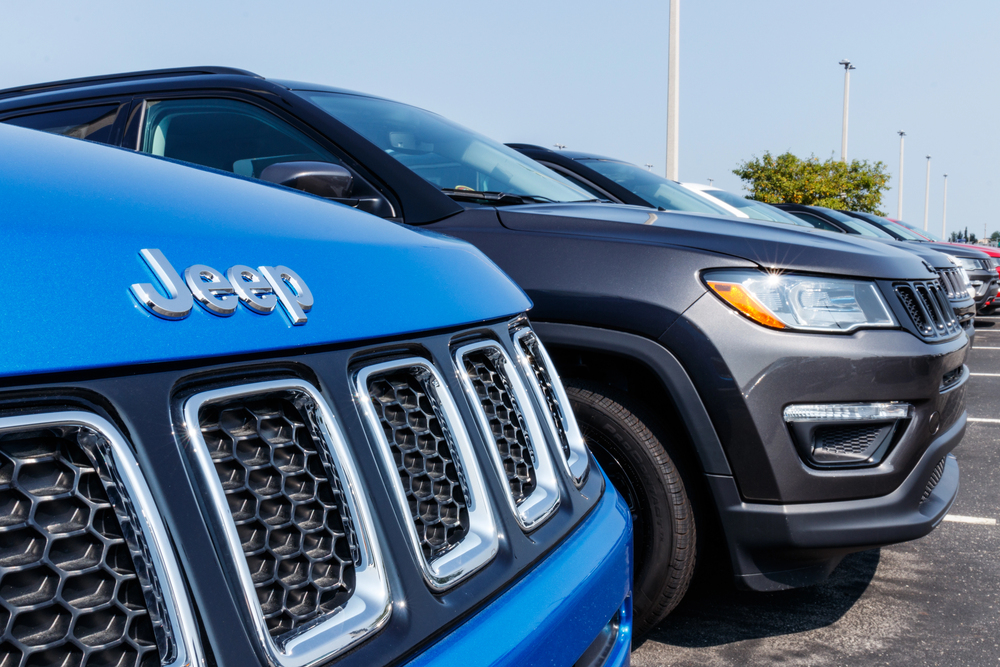Tariffs are taking a big toll on US Automakers
Valerie Raskovic

To understand the overall impact that tariffs have on the US car market, it is important to take into account that all mass-produced vehicles today rely on a global supply chain. This means that even if your vehicle was assembled in the US, it is very likely to have a lot of parts made all over the world. For example, most airbags are made by Autoliv, a Swedish company that manufactures their airbags in China, Mexico and the US. Similarly, Bosch the leading producer of alternators found in a lot of new vehicles, is a German company that sources materials and assembles most of their products overseas. So just because the car is assembled in the US does not make it immune to new tariffs placed on goods exported from foreign countries.
On March 26, 2025, the Trump administration announced a 25% tariff on imported vehicles and auto parts, effective April 3. While the United States-Mexico-Canada Agreement (USMCA) trade agreement compliant parts were initially exempted, those exemptions ended by May 3, escalating the financial strain on automakers. Trump's tariffs are now applied broadly to vehicles assembled in Mexico and Canada as well as all the vehicle components made anywhere outside the country.
Keeping in mind modern global supply dynamics, it is to be expected that manufacturing costs for all car manufacturers selling vehicles in the US will increase. In fact, in the first half of 2025 alone, several major US automakers reported sizable financial setbacks, attributing much of the impact to newly imposed U.S. tariffs.
General Motors: $1.1 Billion Hit in the 2nd Quarter
On July 22, GM revealed that its operating income for the three months ending in June had dropped 32%, down to about $3.0 billion, with a $1.1 billion reduction directly linked to Trump-era tariffs. As reported by the Wall Street Journal, while the overall revenue fell only slightly, GM confirmed that tariff-related costs are on track to reduce its full-year adjusted profit by $4 to 5 billion.
Stellantis: $2.7 Billion Loss in H1
Stellantis, the owner of Dodge, Jeep, Ram, Fiat and Alfa Romeo, posted a staggering 2.7 billion net loss in the first six months of 2025. These figures are worlds apart from the 5,6 biilion in profit reported just a year earlier. According to the reporting by the Wall Street Journal, the brand expects more impact from U.S. tariffs on vehicles and auto part imports in the second half of 2025.
Ford Motor Co.: 65% drop in income in 2025
In early 2025, Ford Motor Co. announced it would suspend its financial guidance and withdrew its earlier earnings production of $7.0 billion, citing the destabilizing effect of newly enacted tariffs imposed by the Trump administration. As reported by Reuters, Ford executives projected the tariffs would create approximately $2.5 billion in added costs for the year. The company is making an effort to mitigate the costs and possible losses through supply chain adjustments, which helped offset roughly $1 billion, leaving an estimated net profit impact of $1.5 billion in adjusted EBIT (earnings before interest and taxes).
Other Automakers Feeling the Strain
Other automakers are also feeling the strain of newly enacted tarifffs on imported goods. No automaker is immune to the impact these tariffs pose on the US car industry. Both US and foreign manufacturers are having to go back and amend their predicted earnings, affecting company stock prices and increasing the overall volatility within multiple sectors of the US car industry.
- Audi, part of the VW Group, lowered its full-year revenue forecast after absorbing tariff-related and restructuring pressures. Profit margin expectations were revised down to 5–7% from an earlier 7–9% range.
- Hyundai, which lacked U.S. production facilities, reported a $602 million operating loss in Q2, citing a 25% tariff on foreign-made vehicles as a major contributor.
Real Consequences for Automakers and Consumers
The tariff-driven downturn forced Stellantis to temporarily halt production in Canada and Mexico and lay off 900 U.S. workers. Volkswagen and Stellantis, in particular, are under pressure to restructure. VW is planning to cut 35,000 jobs by 2030 in an attempt to shift production to the U.S. where feasible.
According to the Yale Budget Lab, the average tariff rate facing Americans is now 18.7%, the highest since 1933. Ultimately, these impacts affect consumers through higher vehicle prices, reduced available models and slower rollout of new EV technology.
Bottom Line
Blindly imposing large tariffs on auto manufacturers can have a devastating effect on the US auto industry. As consumers we are just beginning to feel that effect in increased car prices and limited vehicle availability in certain regions of the country. It is foolish to assume that big automakers like Hyundai, Stellantis, Volkswagen and GM are going to absorb the multibillion-dollar losses tied to these newly enacted tariffs. In addition to passing on the losses to the consumer in the form of higher prices, the automakers will reshape supply chains, promoting product shifts threatening consumer choice. As trade policy continues evolving, the U.S. auto industry and those who depend on it are bracing for profound financial and strategic consequences.
Read more articles

